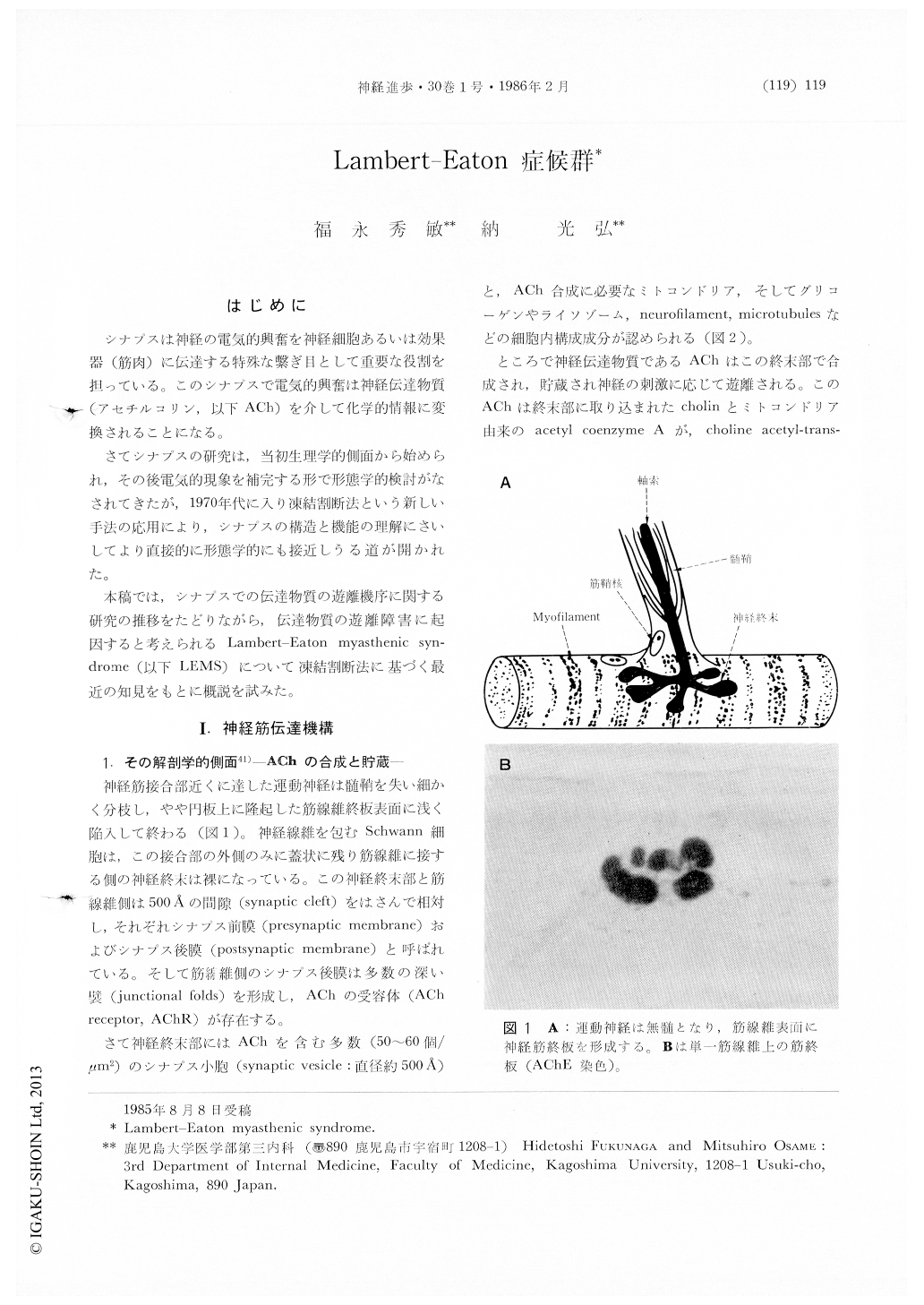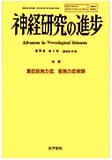Japanese
English
- 有料閲覧
- Abstract 文献概要
- 1ページ目 Look Inside
はじめに
シナプスは神経の電気的興奮を神経細胞あるいは効果器(筋肉)に伝達する特殊な繋ぎ目として重要な役割を担っている。このシナプスで電気的興奮は神経伝達物質(アセチルコリン,以下ACh)を介して化学的情報に変換されることになる。
さてシナプスの研究は,当初生理学的側面から始められ,その後電気的現象を補完する形で形態学的検討がなされてきたが,1970年代に入り凍結割断法という新しい手法の応用により,シナプスの構造と機能の理解にさいしてより直接的に形態学的にも接近しうる道が開かれた。
In this review at first we will summarize the basic mechanism of neuromuscular transmission and recent studies in Lambert-Eaton myasthenic syndrome (LEMS) are presented.
Now several lines of evidence suggest that autoimmunity might be involved in the patho-genesis of LEMS.
Presynaptic membrane active zones are related to synaptic vesicle exocytosis, and the large intra-membrane particles in these ones may represent voltage-sensitive calcium channels. We tested the hypothesis that an abnormality of the zones is associated with the low probability of quantalrelease in LEMS. Freeze-fractured presynaptic membranes were studied in nine patients with LEMS (227 end-plates) and in 14 controls (148 end-plates). Satisfactory replica of 94 LEMS and 83 control presynaptic membrane P-faces were obtained. Presynaptic membrane areas were esti-mated by stereometric analysis. The LEMS samples showed a marked decrease in active zones and active zone particles per unit area. The average number of particles per active zone was also reduced. Clusters of large particles were observed with increased frequency in the LEMS samples. These may have arisen by aggregation of active zone particles. There was no decrease in the overall density of intramembrane particles not associated with active zones or clusters. The findings can explain the reduced quantal release in LEMS, and strongly suggest that active zone particles are targets of the pathogenic autoanti-bodies recently demonstrated in this disease.

Copyright © 1986, Igaku-Shoin Ltd. All rights reserved.


